QuestionI have noticed my Leopard Gecko acting strangely as of lately. She has been much more active and aggressive than usual over the past couple of weeks until yesterday. I tried feeding her some waxworms yesterday and she didn't take it! She has never turned down food as long as I have had her which has been for eight years approximately. I also noticed that her last stools were very small and dry. She has lived on fine-grain sand her whole life. I have been mostly feeding her mealworms the past couple of weeks but I noticed she was getting a little thin a couple of days ago so I bought some waxworms. I also haven't been great about feeding her as often as I should be, although I always dust her food in a mix of different vitamin supplements. My first guess was impaction, but I'm not sure. I am quite worried since this has never happened before and I know impaction can be fatal. I was wondering if you could tell me what you think the problem is and if I need to call a vet. Thank you very much in advance for what help you can provide.
AnswerHi Chris,
I'm going to include a basic care sheet I wrote to help people out with care. In it you will see a link to the dangers of using sand as a substrate for leos. Leos do not live on sand in the wild and the best substrate for them in captivity is something that cannot be eaten in any way. I also explain the flooring I use for mine.
Leos can lay eggs without ever being with a male but at the age of yours, it should not be a reason(although possible) Does she look fatter in the stomach? Can you see white oval shapes in her stomach on the underside? If yes..then they are eggs..which she MAY be egg bound. If you don't see eggs, then she can be blocked. Sometimes a warm soak in shallow water will help. Also, mine will lick at watermelon which gets more fluids into them. If she is willing to take a bit of water from an eye dropper, that would be great.
When ever there is a chance that they can be blocked from sand or other substrate, I always suggest the vet as forcing them to go can cause damage.
Other things that may help ..switch to crickets..if she doesn't want to chase the crickets, you can break the hind legs on the crickets so they cannot jump..but only if you feel she isn't impacted. It does sound like it may be more a case of dehydration...but always better to be safe and call a vet. When we are positive it isn't a blockage possibility, offering a small amount of plain, canned pumpkin can help them to "go".
Leos generally eat every other day... there are times when mine will go for 2-3 days between feedings as they just are not interested sometimes. Also, double check your temperatures to make sure they are where they need to be..especially the floor temperature.
BASIC CARE FOR A LEOPARD GECKO
Leopards are pretty easy to care for but they do need
special care. Here are some of the basic needs of your gecko.
HOUSING: The need to have at least a 20 gallon long tank for one Leo. This needs to have a secure fitting screen top...they can be quite the escape artists!!! They need to have a humid hide box.You can make this with something as simple as a small plastic dish with a hole cut in one side and a small mesh bag filled with some Sphagnum moss coconut bark or Peat moss that you mist.
I made mine out of the small plastic Folgers coffee containers...I cut an opening in the lid..and put the moss in..they LOVE it. I use the terrarium moss in mine.
I use that on the warm side of the tank. Be sure to provide a cool hide box on the other end. I also provide a mid temperature hide...which is in the middle of the tank.I use the critter caves which you can purchase. NOT the ones that have heat in them!!!!
Provide secure climbing areas for your gecko. Fake plants, rocks and branches are all fine to use. be sure there are no wires or sharp ends to any fake plants you use.
*****SUBSTRATE:(that's the stuff on the floor of your tank) Newspaper, lizard carpet or paper towels work great and are easy to clean and are much safer than any loose substrate. Sand or other loose substrate is not recommended as that they can be deadly to the leo when it is ingested(eaten, even by accident while eating their insects)...A very graphic site of an impacted leo surg can be seen at http://homepage.mac.com/exoticdvm/reptile/PhotoAlbum181.html it is very graphic!!! ******What I have found that works great for safety and heat distribution is using about 1/4 inch of children's play sand(since the tiles fit tight together, there is no sand danger) on the bottom of the tank and on top that you place ceramic or slate floor tile. What is nice is that the 12 x 12 squares fit perfect in a 20 gallon tank with no spaces between the tiles. The sand and the tile distribute the heat wonderfully. Using the under tank heater as described is what distributes the heat. Also
, overhead heat will help in heating the tiles...I've been using this set up for several years and the leos love it. Using a tile that isn't smooth is recommended. **********
TEMPERATURES: They need a warm area ( on the floor) of 88-92 degrees and a
cooler area in the upper 70s, low 80s. At night their temperature can drop to the low to mid 70's.
Never use a hot rock for a leopard gecko...or any reptile.
They can severely burn any reptile. You can use a heating
pad under the tank,under tank heater for the warm area. You can use a regular household light bulb in a dome fixture with a ceramic socket in it to keep the warm area at the 88-92 degree area if needed there, otherwise, placing the light bulb about midway in the tank will give the needed temperatures throughout the tank. You may have to play with the wattage of the bulb but generally 40-60 watts is sufficient.At night, no white light. If room temperatures stay above 70 degrees, no extra night heat is needed. The under tank heater or heating pad should cover about 1/3 of the tank....be sure to raise the tank up about 1/4-1/2 inch off the stand when using an under tank heat source to prevent heat build up which can cause the glass to break and hot spots in the glass. Be sure to have a good layer of newspaper, carpeting or, even a thin flat rock(such as tile) on top the area that the under tank heat source is placed...if you use a thin rock or tile, it helps to distribute the
heat very well.
You can use the special nighttime lights that are designed for reptiles. I like using a ceramic heat emitter on a thermostat for nighttime heat.
DO NOT use black lights or party lights as they can cause eye damage!!!!
The wattage you use will vary based on room temperature and size of tank.
LIGHTING: Leopard geckos do not need UVB lighting but it does not hurt them to give them uvb. They should have some type of light during the day, be it a uvb tube, regular florescent light, reptile day light or regular household light bulb. NO white lights at night!!!
FEEDING: Geckos should not be fed crickets or other insects that are bigger than the space between their eyes. Generally, hatchlings can be fed more than once a day,juvys can be fed twice a day, adults are fed once daily or every other day, in the early evening. Crickets and other food items such as silk worms, super, and an occasional treat of a wax worm, need to be dusted with a calcium supplement two times a week and also they should have a small dish of calcium in their tank. I use the lid of a milk jug for the little dish of calcium in their tank. For dusting the insects, Use a calcium with no added phosphorus. Insects must be gut loaded(fed) for at least 48 hours prior to feeding your gecko. Remove any uneaten crix or superworms after 15-20 minutes..... Place a piece of cut potato in the tank so that if you have missed any uneaten insects, they will eat the potato instead of nibbling on your gecko!!!
*************You have to be sure to feed your crickets and insects the right foods before feeding them to your gecko. If your crickets/insects are not healthy and well fed, your gecko will not get the nutrition he needs. You can gut load your crickets and insects greens, veggies, cereals or specially designed commercial foods for crickets or the insects you are feeding. ************
Be sure to have a small dish of clean water for your gecko at all times!!
You can offer them some baby food or fruits on occasion ...
Mine will even eat a small piece of watermelon now and then.WATER: always provide a dish of drinking water. If you choose to mist your gecko to drink, its best to not get the tank too wet as that they do not do well with higher humidity. Sometimes its better to take your leo out of their tank to mist them to get them to drink!!!
HANDLING: Some geckos enjoy being held...others prefer not to be handled at all. Be sure to be very gentle when holding your leo and NEVER grab them by the tail! Their tails are extremely fragile and will break.
I do suggest finding a vet that can treat reptiles BEFORE you actually need one!!! To find a vet that is able to care for reptiles:
http://www.herpvetconnection.com
http://www.arav.org/ECOMARAV/timssnet/amm/tnt_mdsearch.cfm
http://www.anapsid.org/vets/
For more information on leopard geckos:
http://www.drgecko.com
If you have any questions or don't understand something, please let me know.

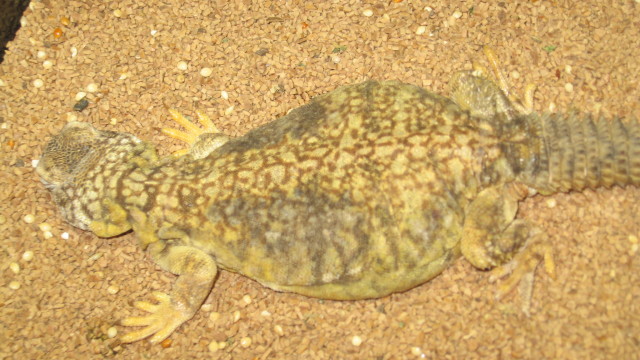 Thermal burns on uromastyx
Question
thea
hello i have a three year old uro and i t
Thermal burns on uromastyx
Question
thea
hello i have a three year old uro and i t
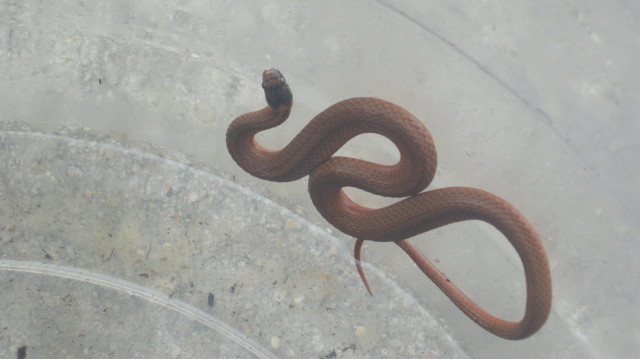 Can you identify this snake?
Question
Snake
Yesterday we found 2 snake sin our pool,
Can you identify this snake?
Question
Snake
Yesterday we found 2 snake sin our pool,
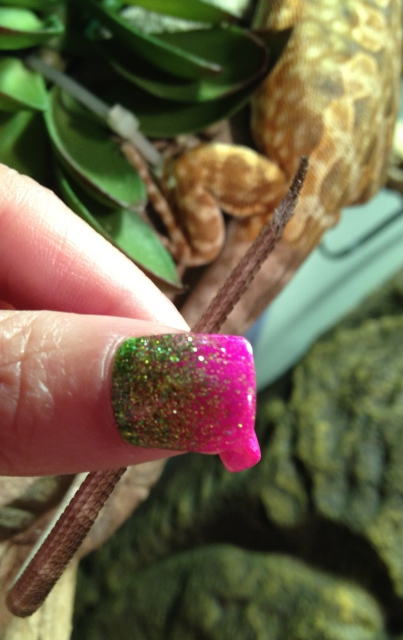 Bearded Dragon Tail
Question
tail 4-001.jpg
Hi, I have a 14 week old
Bearded Dragon Tail
Question
tail 4-001.jpg
Hi, I have a 14 week old
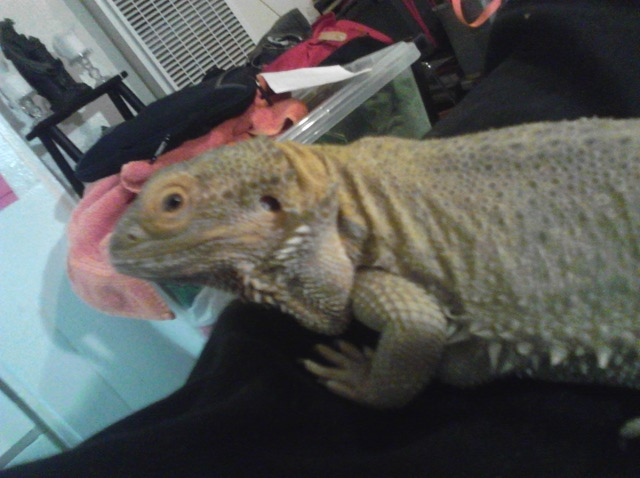 my bearded dragon makes a popping noise during exhale.....
Question
Oz
Good morning. I am worried about my
my bearded dragon makes a popping noise during exhale.....
Question
Oz
Good morning. I am worried about my
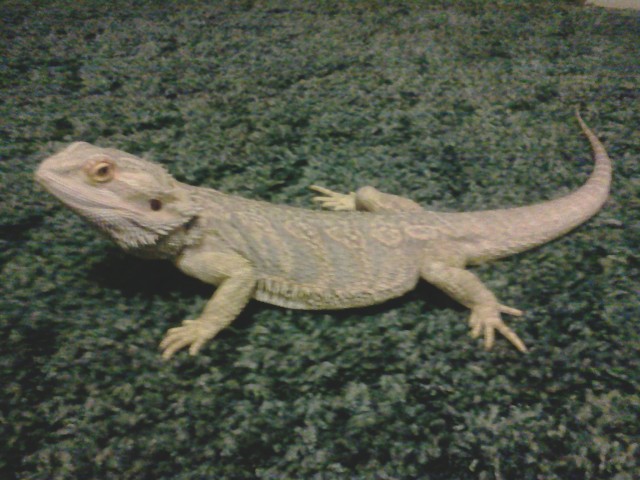 need help with my bearded dragon
QuestionChenchis
QUESTION: Ive had a bearded dra
need help with my bearded dragon
QuestionChenchis
QUESTION: Ive had a bearded dra